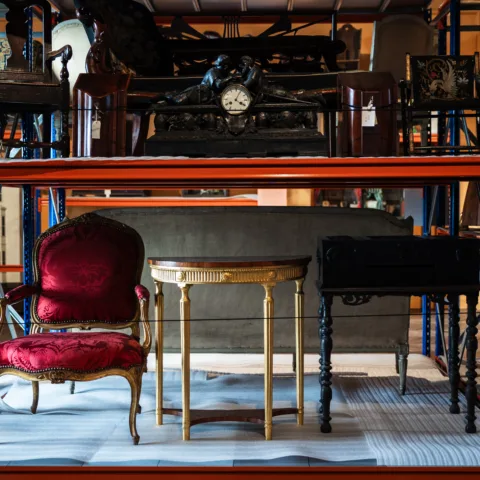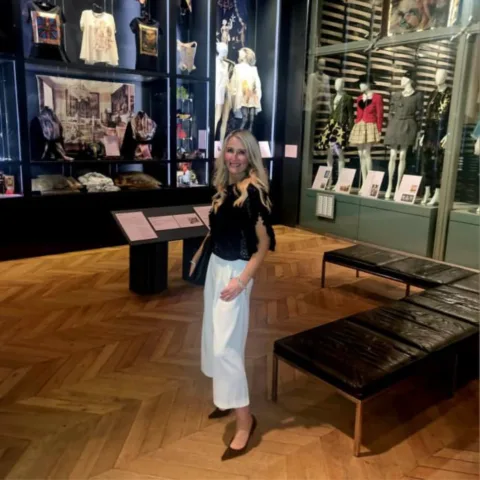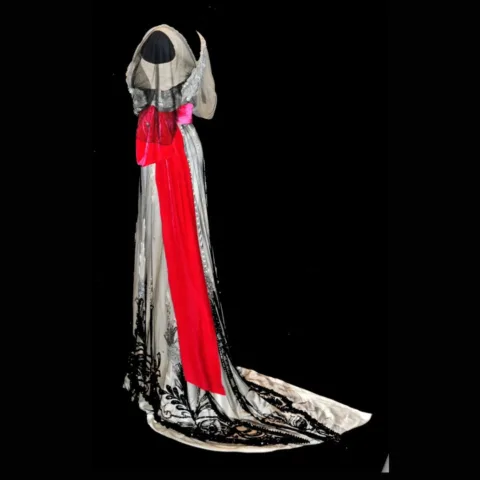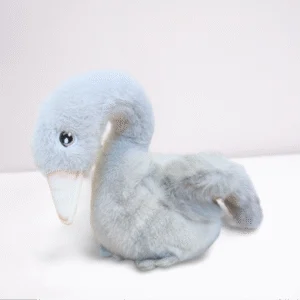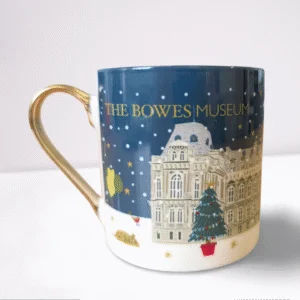The Bowes Museum Blog

Doll Conservation: Petticoat & Shoes
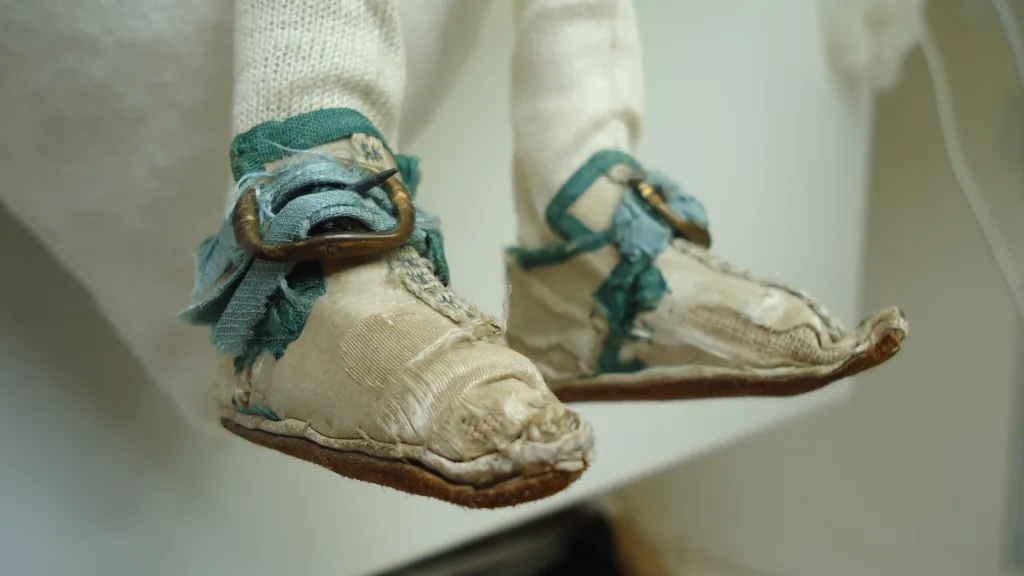
The last few miniature garments from our 1740s fashion doll [TOY.301] have now been conserved. These were the quilted silk petticoat, and buckled silk shoes.
The shoes are constructed from leather, cream silk damask, blue silk ribbon trim and lacing, and a braid with metal thread down the centre front of each. A combination of light damage, and mechanical damage, has left the silk damask in a vulnerable state, with areas of loss, loose and fraying fabric.

Before conservation: fragmentary and vulnerable silk
In order to hold the fragmentary remains in place, a fine conservation nylon net, colour-matched an appropriate shade to visually blend in, was used to encase the silk. The net was pieced, following the seams, to create the correct shape, and cut in and around the ribbon trim. All stitching was carried out using a fine curved surgical needle, and colour-matched fine polyester thread.

Insect pins hold the nylon net in place
Any attempt to insert colour-matched silk patches behind the areas of loss would be too difficult (read: small and fiddly), whereas net visually disppears, holds down loose fabric to prevent snagging, and, crucially for such small patches, doesn’t fray when cut.

Bare foot
The shoes were removed from the feet for conservation, to ensure that the stitching didn’t accidentally pass through the stocking beneath, and so that we could have a peek at the doll’s bare feet. Sometimes dolls have individually carved toes, but in this case, not.

Shoes after conservation: spot the net overlays
The remaining item of underwear requiring conservation was a green silk quilted petticoat. This garment wasn’t wet cleaned (there was no need), and was overall in very good condition. Protected beneath the dress, the skirt hasn’t suffered from any light damage, but was creased (from the doll being stored flat in a box), with a single hole in the green silk, and several holes in the wool lining.

Silk petticoat, lined with wool, and quilted with a diamond pattern
First, the deep creases were removed from the petticoat, and from the waist tapes, by humidification, using barely damp blotting paper, Sympatex (semi-permeable membrane), and soft weights to gently realign the creased textile.

Single hole in green silk
With no matching shade of green silk in our scraps box, I chose a similar weight plainweave silk, and dyed it myself to match the vibrant green colour of the petticoat. I used Lanaset dyes (of which you can read more here), which are used to dye protein fibres and nylon, these dyes have good wet and light-fastness, and the dye process is a simple one.

Stock dye colours – yellow and blue (mixed to make green on the right)

5 green samples, each a slightly different depth of shade

The perfect colour match!
The resulting green silk fabric was used to patch-repair the hole in the petticoat, with laid-thread couching using a fine polyester thread in matching vivid green.

After conservation: spot the hole
Holes in the wool lining are the result of past insect damage. Where these holes were small, and not at risk of further unravelling, or snagging, they were left. Where the holes were large, fraying, and around the lower edge of the petticoat, they were conserved. An appropriately colour-matched nylon net (useful in so many situations!) was used as an overlay to damaged areas.

Petticoat turned inside out for conservation of the lining

Nylon net pinned in position
The doll, and her underwear, is now ready for final photography. We’re fortunate to have a professional object photographer on staff, so I’ll be carrying the doll, and her clothes, up to the photography studio this week.
Katy Smith, Textile Conservator

Incase you’ve missed the previous installments of this blog, you can read more about the treatment of the 1740s fashion doll using these links:
